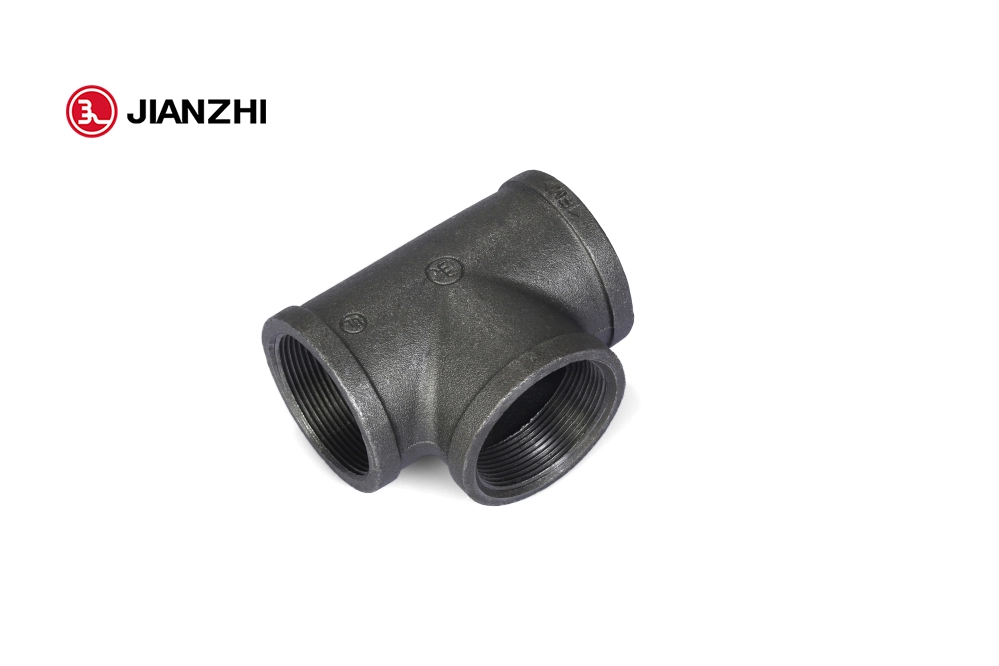A T pipe fitting, also known as a tee fitting or tee connector, is a type of pipe fitting that is used to connect three pipes at a T-shaped intersection. The T fitting has three openings, with one opening on the top and two openings on the sides, forming a T shape. The top opening is usually the same size as the other two openings, allowing for equal flow of fluid or gas through each branch of the T.
T pipe fittings come in a variety of materials, including PVC, copper, steel, and brass, and are available in different sizes to accommodate various pipe diameters. They are commonly used in plumbing and industrial applications to join pipes at a T intersection, allowing for the flow of fluids or gases in multiple directions.
T fittings are available in different configurations, including:
Standard T fitting: A standard T fitting has three openings of equal size and is used to join three pipes of the same diameter.
Reducing T fitting: A reducing T fitting has three openings of different sizes, allowing for the connection of three pipes of different diameters.
Cross T fitting: A cross T fitting has four openings, with one opening on the top and three openings on the sides, forming a cross shape. Cross T fittings are used to join four pipes at a cross intersection.
T pipe fittings can be secured to the pipes using various methods, including soldering, welding, t pipe fitting supplier or threading, depending on the material and application. It is important to choose the correct type and size of T fitting for your specific application to ensure a tight and secure connection.
The method for securing T fittings to pipes depends on the type of material of the fittings and the pipes involved.
Here are some common methods for securing T fittings to pipes:
Soldering: Soldering is a common method for securing copper T fittings to copper pipes. The process involves heating the joint with a torch and melting a solder that is drawn into the joint by capillary action. The solder cools and solidifies, creating a strong and leak-proof joint.
Welding: Welding is a common method for securing steel T fittings to steel pipes. The process involves heating the joint with a welding torch or machine and fusing the materials together. The resulting joint is strong and durable.
Threaded connections: Threaded connections are a common method for securing T fittings to pipes made of various materials, including PVC, steel, and brass. The fittings are designed with threads that match the threads on the pipes. Threaded connections can be tightened using a wrench or pliers to create a secure connection.
Compression fittings: Compression fittings are a common method for securing T fittings to pipes made of various materials, including copper and PVC. The fittings are designed to compress a seal or gasket between the fitting and the pipe, creating a tight and leak-proof connection.
It is important to choose the appropriate method for securing T fittings to pipes based on the specific application and the materials involved. It is also important to follow the manufacturer’s instructions and use the appropriate tools and equipment to ensure a secure and leak-proof joint.
